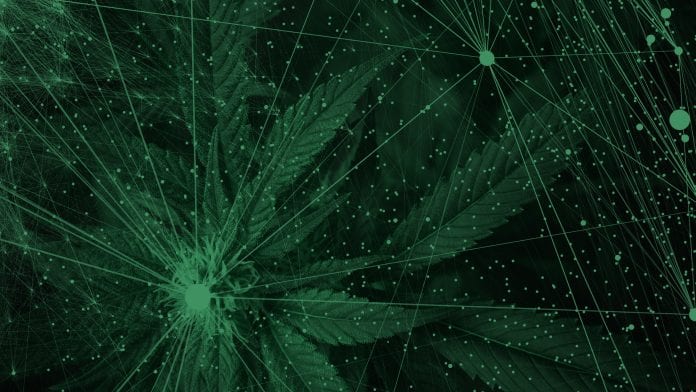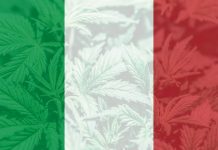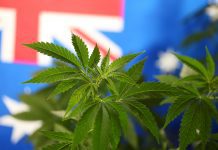
CBD Export Global sets the international standard in sourcing, processing and supplying compliant hemp and cannabis ingredients for manufacturing consumer packaged goods.
CBD Export Global has a strategic network and strong relationships along the supply chain which it utilises to meet the expanding needs of a strictly regulated client base, enabling them to enter the largest markets in the world.
Some people are still surprised to learn that cannabis use by humans is documented in written history as far back as the third millennium BC. In fact, archaeological evidence dates usage even further back: cannabis was first harvested in nature by nomads and eventually planted by sedentary societies purposely to be used locally. As time passed, cannabis took a central role in evolving societies, both as a material (hemp) and for medicinal use (marijuana), as well as for nutritional and ritualistic purposes.
By the 20th century, cannabis became no longer simply grown and used locally, but massively produced in the way of other commodity crops. When production was effectively federally banned throughout the United States in 1937 with the passing of the Marihuana Tax Act, cannabis had the largest footprint of any agricultural crop. With the World Health Organisation and the International Narcotics Control Board scheduling and regulating it as a dangerous narcotic some 60 years ago, the global situation was similar. Only the black market flourished and continued to thrive.
Whether or not the policy was justified at the time, or achieved its stated goals, it has nonetheless resulted in the undoing of a well established production and supply chain which was already finely tuned, over a century ago, to respond to a great market demand. A quick internet search will even turn out photos of vials with FDA approval dating back to the 1920s. In a snap, cannabis went from being everywhere to virtually nowhere.
We can only wonder how cannabis would permeate today’s society had it not been plucked and buried until now. It is probably safe to surmise that it would be widely used in textiles, bioplastics, paper, construction, food and animal feed; and that we would benefit from a greater knowledge of the human endocannabinoid system and how it can interact with phytocannabinoids. Maybe it would have saved entire forests, avoided seaborne islands of plastic, or brought great medical advancements. Who knows?
Now, we are witnessing – and actively engineering – the revival of this industry by the progressive undoing of prohibition and the crafting of new regulations, which enables the return of market supply and demand, and fostering innovation in a diverse array of fields. It is happening today, and happening faster than ever, all around the globe.
Going global
The world is legalising; products are coming to market; consumers are buying – although regional markets and regulatory systems differ wildly: it is chaos worthy of Feynman. Participants in this renewed industry face the fact that any sector in its infancy necessarily begins in a chaotic state; and must gradually organise itself or face consequences.
These consequences, past, present and looming, are evident in the current state of affairs. It may even seem that we are back to a few millennia BC, just rediscovering cannabis; producing and using it locally, heavily limited within geographical boundaries, this time defined by both entrenched and emerging regulatory restrictions and obligations. At the same time we may also appear to be rapidly advancing towards where we were a century ago, at the industry’s pre-prohibition maturity level; and moving beyond, entering today’s incredibly sophisticated global trade sector.
International bodies, federal governments, health agencies, financial institutions and so on are slowly but surely opening up their minds to cannabis and its derivatives crossing borders, for various intent and purposes. EU good manufacturing practice (GMP) certifications have found their way to continental America – in the North, as Canadian producers seek to rubber stamp their production operations for exporting to European markets, for instance Germany; and in the South, where several Colombian cultivators are doing the same, working to achieve good agricultural practice compliance and other certifications, framing an approach to quality control standards which lends trusted credentials to the origin.
But does the cannabis consumer care where on Earth it comes from?
Designation of origin
Cannabis has been illegally crossing borders in incalculable quantities, and in spite of every big budget effort to stop the illegal trade, the flow has not been arrested. In fact, it has continuously increased.
Several products have gained legendary recognition, often based on their illicit origin; and became deeply ingrained in the cannabis counterculture: Jamaican Gum, Moroccan Hash, Colombian Gold and BC Bud do not need any introduction. These are most often associated with recreational use – the modern archetype of Cheech and Chong hotboxing a car with Mexican weed in California inevitably comes to mind – yet felonious cross-border contraband has been for a number of generations the only source for any other use as well.
The provenance of a product is of increasing importance to the consumer: specific origins are sought after, asked for by name and bragged about at parties, not unlike fine wine, champagne, cologne, and expensive timepieces. While the point of origin of a product has become intrinsically part of the connoisseur’s purchase decision, it is frankly doubtful whether the illegal drugs really came from the alleged origin, or if it just made a great sales pitch for those that would buy the story and pass it along with a joint rolled from oregano.
This issue far predates the predicament of clandestine cannabis purchasers. Protected designation of origin dates back to the year 1411, when Roquefort Blue cheese was regulated by a parliamentary decree – this was probably precipitated by Stilton loaded with penicillium roqueforti making its way to Northern France under the same name as the city where the blue fungus originated. However, it was not until 1905 that the first French law on viticultural designation forever changed the wine industry. Similar regulations now apply to lavender, honey, lentils and even butter. In stark contrast with cannabis, the rule was designed specifically to help exporters.
Nearly a century after the end of alcohol prohibition in the US, just as many other places, Americans are able to enjoy alcoholic beverages legally brewed under reasonable regulatory conditions and imported from all over the globe. Consumers ask for specific origins and trust that the protections in place ensure it comes from where it should.
Cannabis is no exception to this principle; and the particularities of its various origins will not escape the connoisseur’s palate – or their wallet. It should also not escape its producers and marketers when differentiation is key.
But what happens when it’s all the same?
Enter Commoditisation
In business literature, commoditisation is defined as the process by which goods that have economic value and are distinguishable in terms of attributes end up becoming simple commodities in the eyes of the market or consumers. In general terms, commoditisation occurs when large quantities of identical goods will be differentiated only by their price point and timely availability for the necessary downstream supply. For example, minerals such as gold, grains like corn and other products like refined sugar and salt are all commoditised.
Because the product in a given category and grade is identical or similar enough, its origin is of lesser importance except for the critical fact that it may provide a competitive price advantage, as long as it is also readily available when required and where needed.
This phenomenon is now manifesting in the cannabis sector. Formulae for calculating the value of hemp biomass based on the percentage of major cannabinoids it contains are becoming generally accepted as standard. The price of pure cannabinoids, such as crystal isolates of cannabidiol, is fluctuating based on the total offer of identical products versus the market demand. This is easily manageable at a global scale, in comparison to the wild fluctuations in demand and price fluctuation based on the latest trends in genetic preferences of curiously named strains like Gorilla Glue and Alien Dawg.
Commoditisation can be seen as a tradeoff between variety and price. When it comes to compounding cosmetics, infusing food or formulating health and medicinal products, the cost of its active ingredients will determine the price of retail products; and this in turn will affect consumer decision making. This will ultimately differentiate between the losers and winners at the shelf level, as it defines which brands become household favourites.
Equatorial advantage
In certain climates, cannabis can grow outside and in greenhouses all year long. In equatorial regions, cannabis can be planted to provide four full crops annually, or planting can be staggered to provide crops every month or even every week.
This enables continuous harvest and processing, in contrast to the time limited activities and enforced downtime inherent to colder climates; and is much more affordable and viable in the long run, creating economic boosts which are then passed downstream in the supply chain, eventually reaching the buyer.
Farmers achieve a non-negligible set of logistical optimisations, operational advantages and financial benefits when having land, facilities, expertise and equipment fully in use at all times, rather than one and then the other as seasonal cycles alternate. There is sound reasoning to look at South America, Africa and Asia, both as sought-after designated origins as well as enablers of cost-cutting commoditisation.
Don’t be left behind
Global cannabis trade is fast becoming a reality and will bring about a natural, yet much needed, disruption that will propel industry progress and reach for maturity. The mission of CBD Export Global is to play a central role in connecting legal cannabis entities within the expanding global supply chain.
Sourcing
CBD Export Global source a wide range of legal hemp and cannabis biomass, buying directly from producers, farmers and associations wherever purchase has been made legally possible as the industry rapidly expands globally.
Processing
CBD Export Global handle and process this biomass into ingredients with sustainability, safety, reliability and quality in mind; relying on our network of processing plants, global logistics and secure transportation partners.
Manufacturing
CBD Export Global supply these ingredients for manufacturing compliant hemp and cannabis retail products, focused on consumer packaged goods for global distribution channels, leading brands and retailers.
Streamlining global cannabis
With its strategic network and strong relationships along the supply chain, CBD Export Global is able to meet the expanding needs of a strictly regulated client base, enabling them to enter the largest markets in the world.
Alexandre Grenier
Chief Executive Officer
CBD Export Global
+1 844 777 2239
info@cbdexport.com
This article will appear in the second issue of Medical Cannabis Network which is out in April. Click here to get your free subscription today.








CBD is the most helpful of my back pains